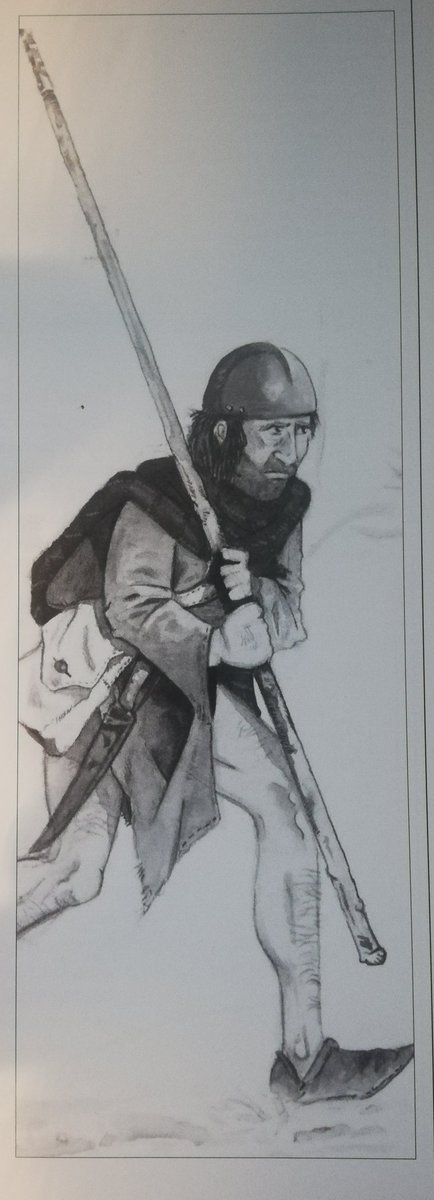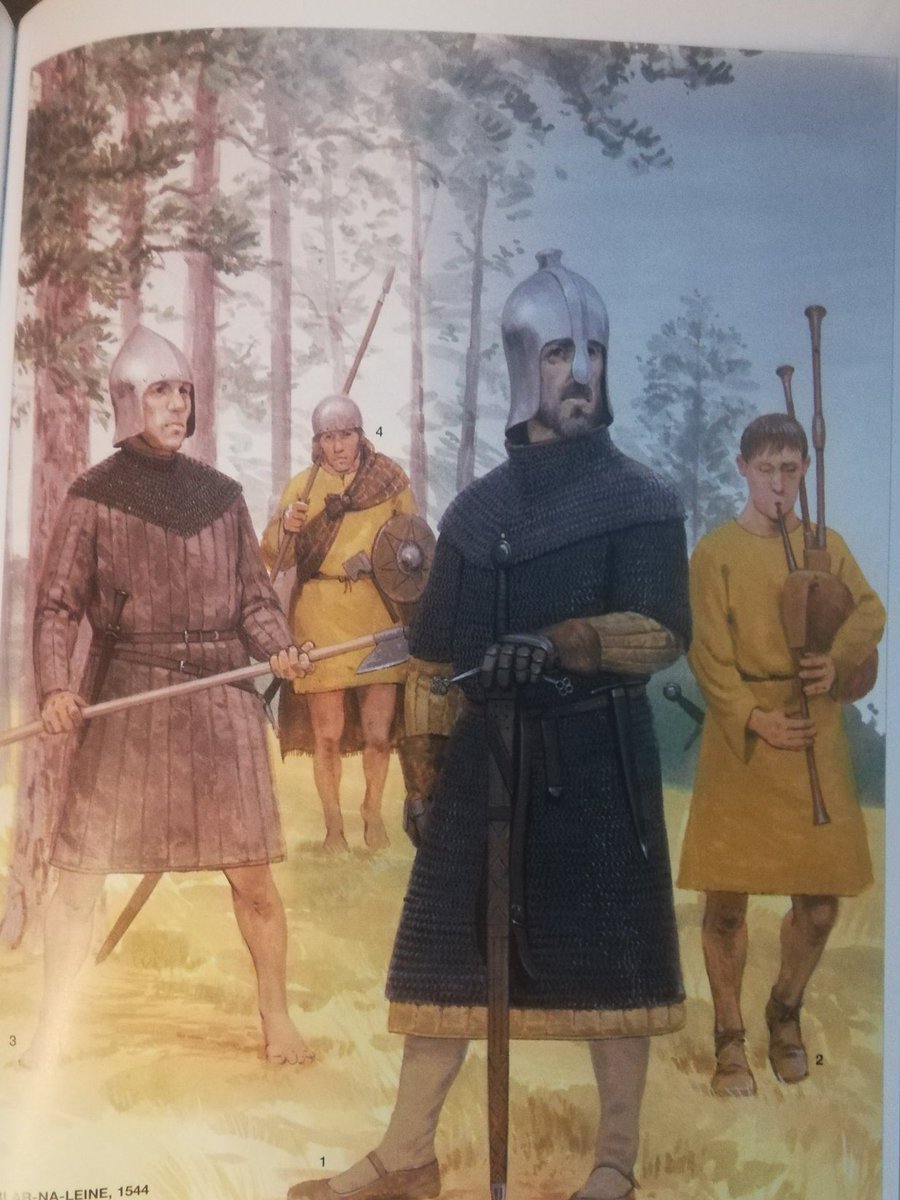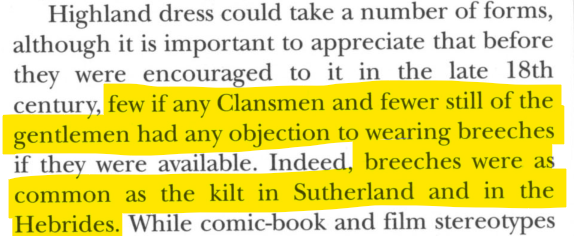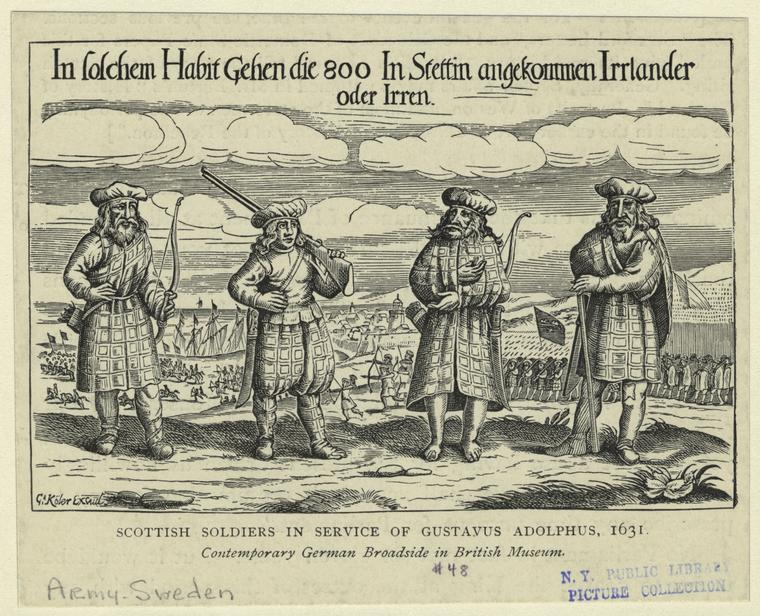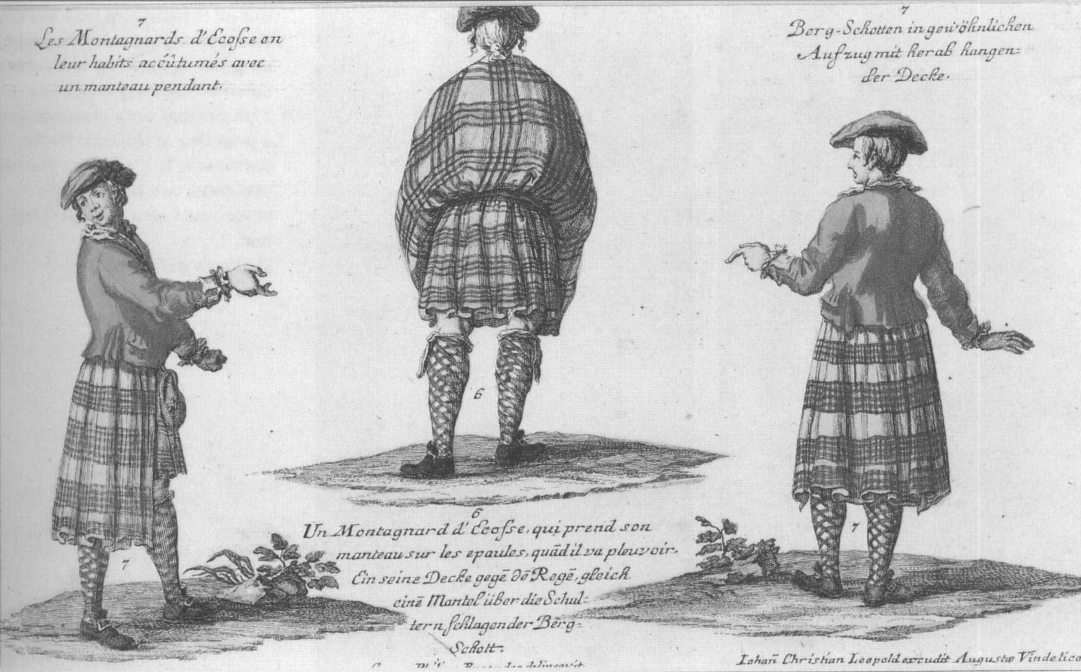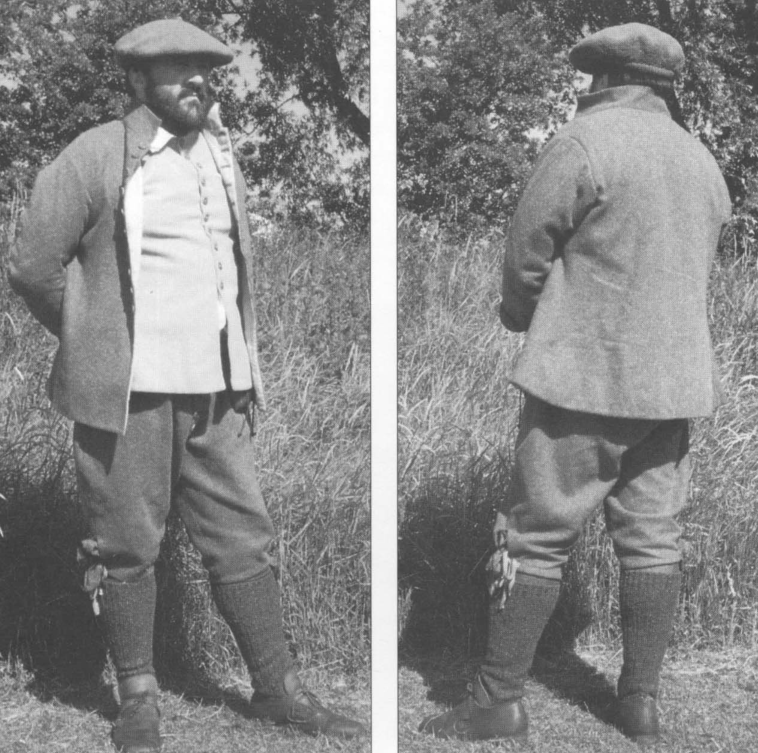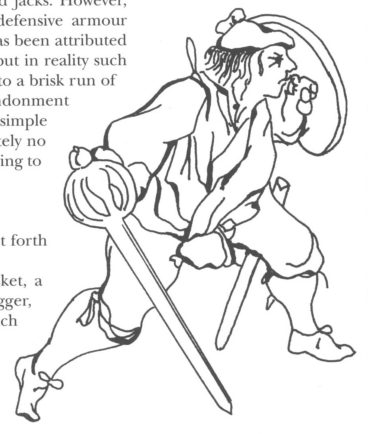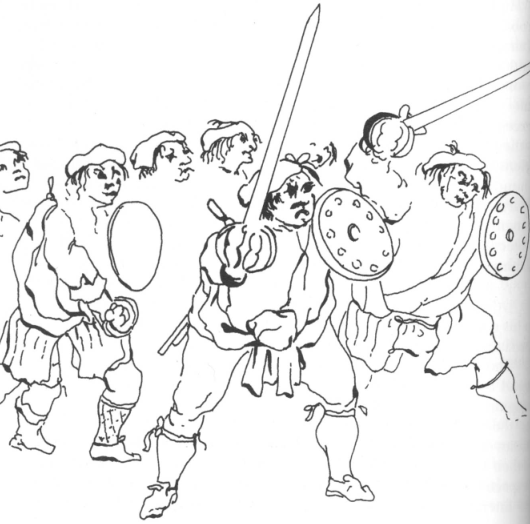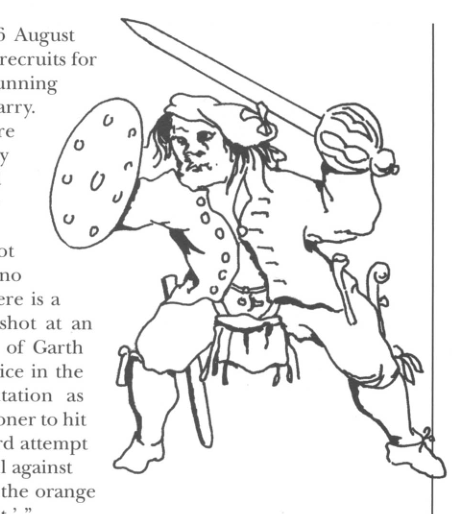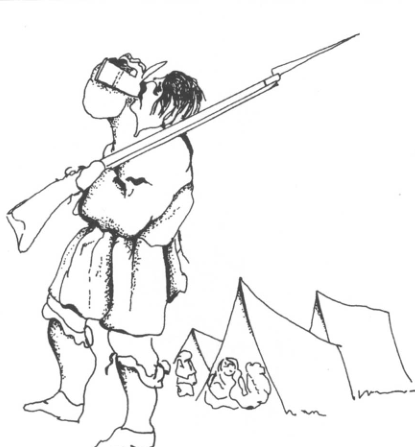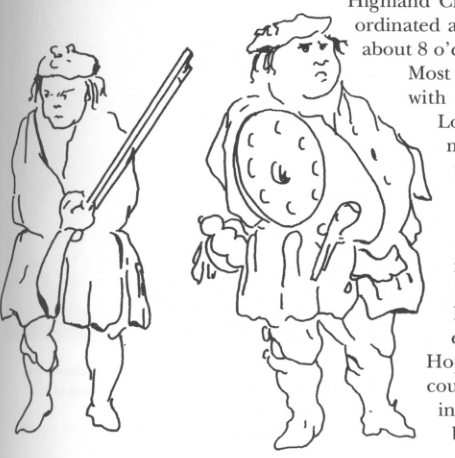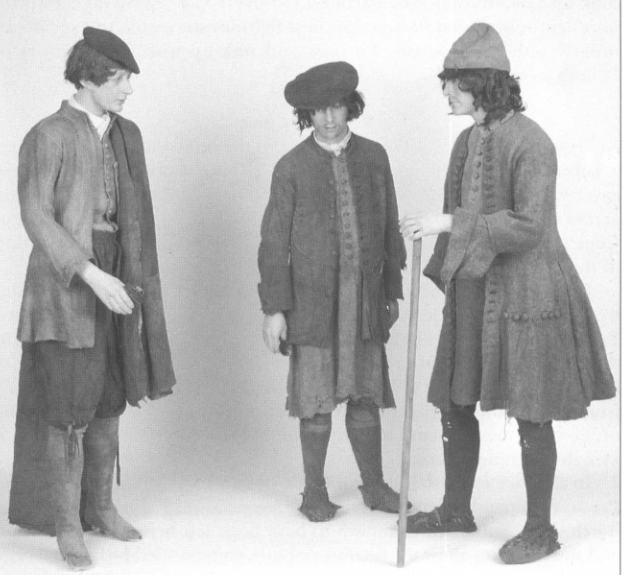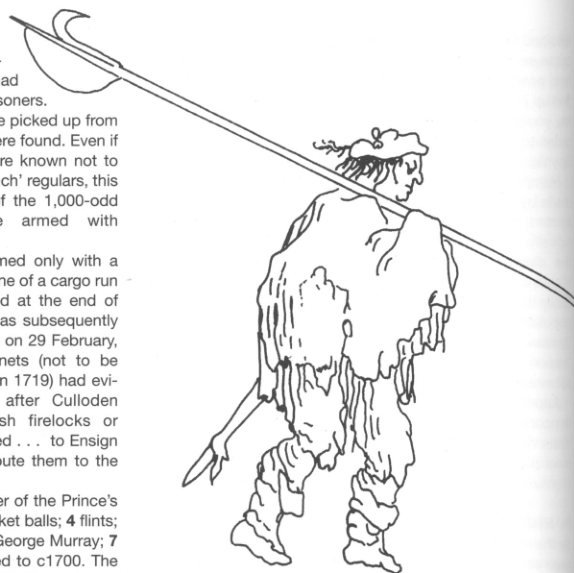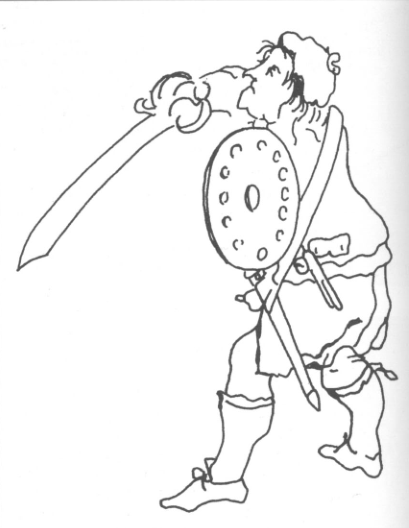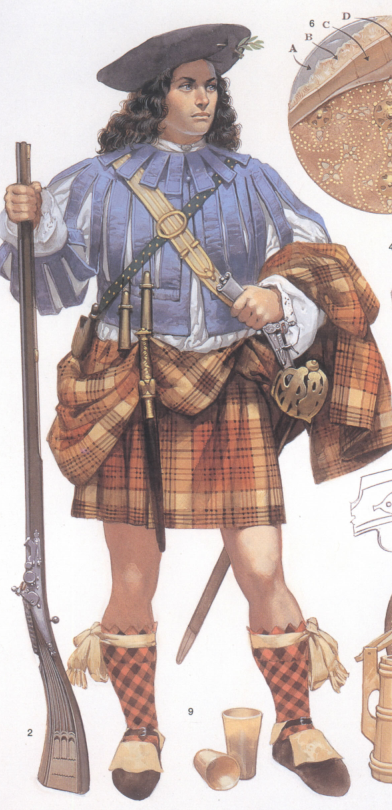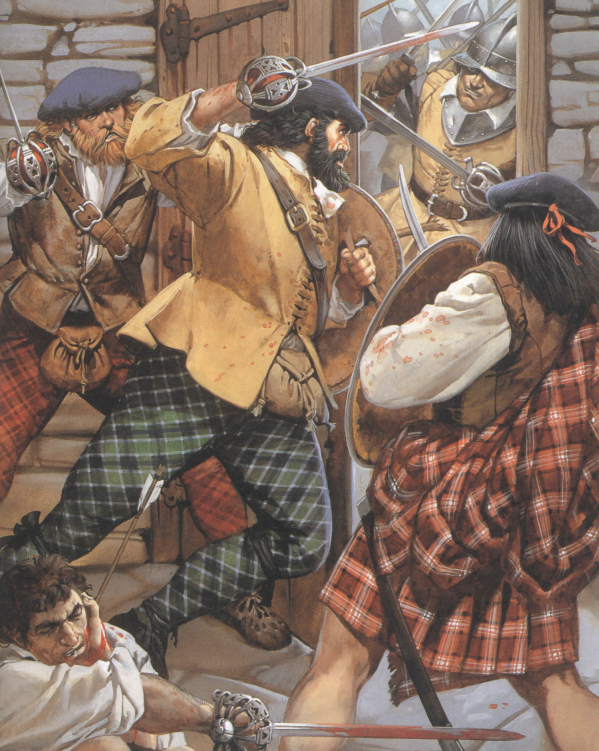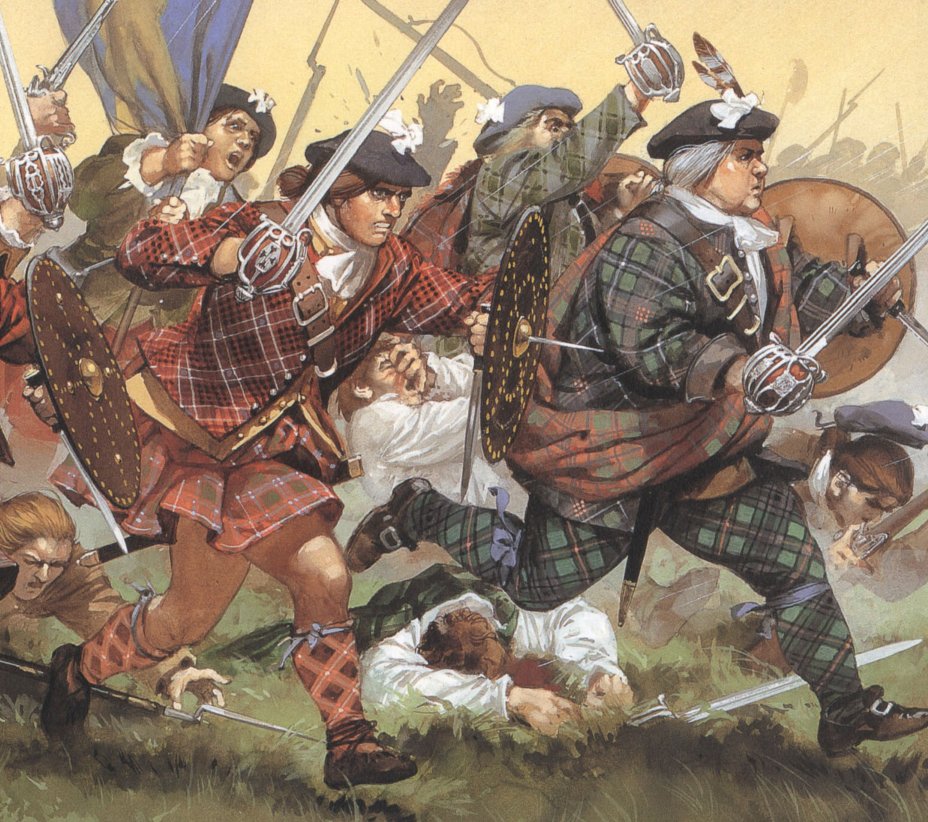Some thoughts/details on tartan trews from a couple of Osprey publications, with particular respect to them being pieces of military clothing. https://twitter.com/molach95/status/1325095405672140801">https://twitter.com/molach95/...
First up, some basic Highland military structure. The basic officer-level character was the Tacksman, sometimes called the "Gentleman" in publications. The top level of society under the Chief and his immediate associates, a man with a lease of land (tack) from the Chief
The Tacksman owed his allegiance obviously to the Chief and was a fighting man who would lead his mean from the front. Below the Tacksman was the basic fighting man, the Cearnach (the Cateran in Scots). At the back were the lowest level, the Ghillies.
The cearnach was not your target and broadsword swinging Highland warrior of the popular imagination. He was lightly and poorly equipped. A helmet maybe, a shirt and plaid, a spear or Lochaber axe and a short sword or dirk
16th century Highland warriors. The well equipped man at the front is a Chief. To the left is a "Galloglas", a "foreign warrior" or hired fighting man. He is reasonable well equipped and protected. Between them is the Cearnach with his tunic and plaid. On the right a piper.
The basic item of clothing was the Leine or shirt. It was described as being dyed saffron and coming down to knee length. They are also described as wearing a padded linen jacket reinforced with pitch and animal hide as primitive protection from bladed weapons.
But no kilts or trews. The plaid is a practical item that can be worn as a cloak or coat and used as a blanket or shelter or to form a makeshift bag for carrying things.
At the bottom is the ghillie, probably with little more than his plaid and leine and a bonnet. He may have a knife and a bow. Archery was important in Highland warfare. His basic role in the unit was domestic, he was also important for driving stolen cattle
He might not be expected to fight, although he may be called upon in times of need or to help "mop up" once the day had been carried.
Winding forward a bit to the 18th Century, here& #39;s an important passage about trousers
Here& #39;s a rare contemporary illustration of 17th century Highland fighting men in European service. The common item is the bonnet. A variety of plaid styles are shown, one man has breeches and another a long coat.
A short coat was favoured, most likely wool, and woollen or linen shirts would have been worn under it. The plaid had by this time developed into an item of clothing that could be worn in a variety of ways with a large leather belt.
The central example in the illustration, with the outer layer of plaid thrown over the shoulders, is thought to be what is described as the "mantle" in 16th century references.
Less about plaids and more about trousers though! Trousers were apparently more common than we imagine, and remains have even been recovered from bog bodies. This is a reconstruction of a 17th century Caithness bog body.
The "modern" kilt did not really begin to develop until later, and the belted plaid was not always practical. Men might abandon it entirely and go in their Leine, or take to breeches trousers. Boat men are mentioned explicitly here.
Trews or truibhs were a form of hose, and in Highland uses apparently always made from a form of woven tartan. They would be cut on the bias to make them more flexible at the knee, giving a diagonal pattern. They were quite a close fit. Think of them as tartan leggings.
Breeches were baggier and were cut to the knee, where they were gathered. They were worn with long woollen stockings, which often had a pattern, again on the bias to give a diagonal check.
There is evidence that trews were quite common, particularly as larger horses began to be introduced into the Highlands. The "gentlemen" (Tacksmen) may have worn their trews in combination with their belted plaid in poorer weather, as they could afford a variety of clothing.
Short jackets were popular as the plaid served as the cape/cloak/poor weather clothing. Originally dyed to a single colour of greys, blues, greens or browns, by the 18th century they had become to be made from a woven tartan.
Tartans too would be relatively muted colours for most men, as the dyes would be natural and rather weak. The gentlemen and gentry could afford better and their tartan is described as being quite bold and garish.
It is likely most men wore a similar tartan to their kin, purely because the items were produced locally from local materials and little variation was possible or required. They may also have had yarn provided by the chief to embellish them.
Here is one of the "Penicuik" sketches from The & #39;45 by an unknown lowland artist travelling with the Highland army. He wears trews, gathered at the knees with garters, and his leine is gathered in a knot at his front.
Another group of Highland wariors, the leading man is in trews also. The front ranks of the Highland units were the better equipped and trained tacksmen/gentlemen. They were the shock troops, behind whom the lighter and poorer armed and trained cearnachs followed
General Hawley, who fought the Highlanders in The & #39;15, describes the ranks of cearnachs as "arrant scum!" His judgement may have been clouded somewhat...
Here we see another gentleman warrior, with basket-hilted broadsword, targe (the buckler shield) and a pistol. This is thought to Colonel Angus McDonnell, a son of Glengarry, thus one of the fighting gentry. Again he wears trews and garters.
Here is a ghillie in The & #39;45, meant to be on sentry duty but clearly with other priorities. He has only his leine and stockings on and perhaps a plaid worn across his body and shoulder. He has been given a loan of a musket and bayonet for his duties.
A "portly officer" in The & #39;45 and a ghillie. The officer may be Charles Stewart of Ardsheal, of the Appin regiment. He has trews and a belted plaid on over his coat. The ghillie has a plaid and stockings over his leine.
Here is preserved 17th and 18th century Highland clothing from bog bodies. L-R is Caithness, Lewis and Shetland. The Shetlander wears a knitted hat instead of the bonnet. The Caithness man wears breeches, the Lewis man his leine and the Shetlander has trews.
A Lochaber axe-wielding cearnach from The& #39; 45 who appears to be wearing breeches and a plaid over his shoulders. Again, the bonnet his on his head.
Two warriors weilding Turceach (Turkish) type curved broadswords. On the left he wears breeches, leine and plaid. On the right he doesn& #39;t seem to have the breeches but stockings instead.
A reconstruction of a Highland gentleman warrior of the 1680s. A lot more dandy than the popular imagination allows. Note the quality of his musket, and that it lacks a trigger guard. Scots gunsmiths were skilled and had an aversion to trigger guards apparently!
Lord Lewis Gordon (Huntly) in 1647 with his men. He is dressed rather like any horseman of his time, in breeches, long leather boots, buff jerkin and gauntlets and thick jacket woolen. The warrior wears trews and a short jacket.
Auldearn, 1645. The Highland royalists under Montrose repel an assault from the Covenanter forces under Urry. Leather coats/jerkins and trews in evidence, as is a belted plaid and padded jerkin.
The Jacobite front line at Culloden in 1746. The officer gentlemen lead the charge and are splendidly attired. The leading man wears a full tartan suit of trews and matching jacket, with a plain around his shoulder.
The kilt/trews of current Highland dress are much more modern creations. Traditionally neither existed in their current form. Trews/breeches were common. Trews were popular, particularly amongst the better off who could afford them. Plaids were pretty universal
But there seems to be plenty of evidence that the common man of the Highlands could also be found in trews or breeches.

 Read on Twitter
Read on Twitter